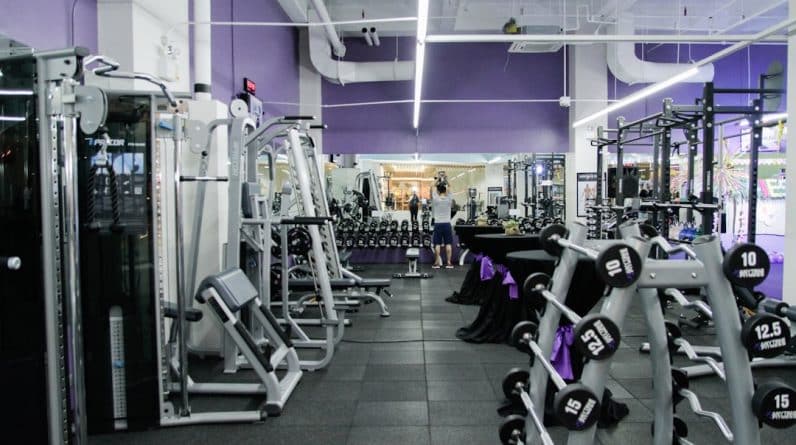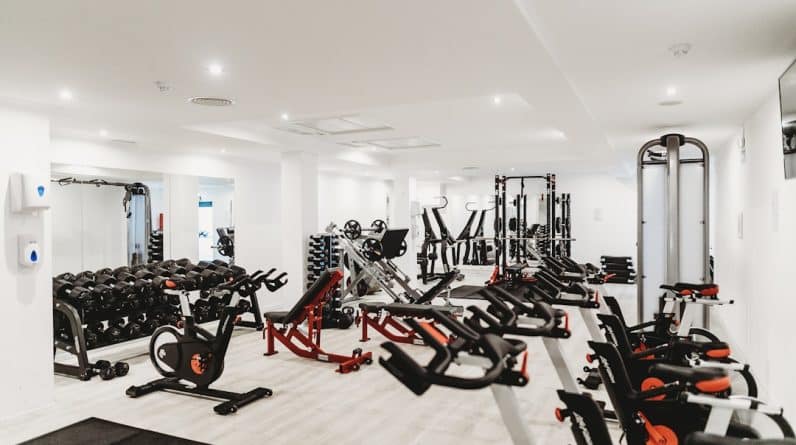
Physical fitness is a multifaceted concept that encompasses various components essential for overall health and well-being. At its core, physical fitness refers to the body’s ability to perform daily activities with vigor and without undue fatigue. It is not merely about being able to run a marathon or lift heavy weights; rather, it involves a balanced combination of cardiovascular endurance, muscular strength, flexibility, and body composition.
Understanding these components is crucial for anyone looking to improve their physical health and achieve a higher quality of life. As you delve deeper into the realm of physical fitness, you will discover that it is not a one-size-fits-all approach. Each individual has unique needs and goals, influenced by factors such as age, lifestyle, and personal preferences.
This understanding allows you to tailor your fitness journey to suit your specific circumstances. By recognizing the importance of each component of fitness, you can create a well-rounded program that promotes not only physical health but also mental and emotional well-being. Embracing this holistic view of fitness can lead to sustainable changes that enhance your overall quality of life.
Key Takeaways
- Physical fitness encompasses cardiovascular health, muscular strength and endurance, flexibility, body composition, and overall health and wellness.
- Assessing cardiovascular health involves measuring heart rate, blood pressure, and aerobic capacity through activities like running or cycling.
- Evaluating muscular strength and endurance includes testing the ability to lift weights or perform bodyweight exercises.
- Measuring flexibility involves assessing the range of motion in joints and muscles through stretching exercises.
- Monitoring body composition includes measuring body fat percentage and muscle mass to understand overall health and fitness levels.
Assessing Cardiovascular Health
Cardiovascular health is a critical aspect of physical fitness that often serves as a foundation for other components. It refers to the efficiency of your heart, lungs, and blood vessels in delivering oxygen to your muscles during physical activity. To assess your cardiovascular health, you might consider engaging in activities that elevate your heart rate, such as running, cycling, or swimming.
Monitoring how your body responds to these activities can provide valuable insights into your cardiovascular fitness level. One effective way to gauge your cardiovascular health is through the use of heart rate monitors or fitness trackers. These devices can help you track your heart rate during exercise and at rest, allowing you to identify patterns and make informed decisions about your training intensity.
Additionally, performing simple tests like the Rockport Walk Test or the Cooper Test can give you a clearer picture of your aerobic capacity. By regularly assessing your cardiovascular health, you can set benchmarks for improvement and adjust your fitness regimen accordingly.
Evaluating Muscular Strength and Endurance

Muscular strength and endurance are vital components of physical fitness that contribute significantly to your overall performance in daily activities and sports. Muscular strength refers to the maximum amount of force a muscle can exert in a single effort, while muscular endurance is the ability of a muscle to sustain repeated contractions over time. Evaluating these aspects of fitness can help you identify areas for improvement and tailor your training program to meet your goals.
To assess your muscular strength, you might consider performing exercises such as bench presses or squats with weights that challenge you. The maximum weight you can lift for one repetition (known as your one-rep max) can serve as a benchmark for strength evaluation. On the other hand, muscular endurance can be assessed through exercises like push-ups or sit-ups, where you count the number of repetitions you can perform before fatigue sets in.
By regularly evaluating your muscular strength and endurance, you can track your progress and make necessary adjustments to your workout routine.
Measuring Flexibility
Flexibility is often an overlooked component of physical fitness, yet it plays a crucial role in maintaining overall health and preventing injuries. It refers to the range of motion available at a joint or group of joints and is essential for performing everyday movements with ease. Measuring flexibility can help you identify tight areas in your body that may benefit from targeted stretching or mobility work.
To assess your flexibility, you might engage in simple tests such as the sit-and-reach test or shoulder flexibility test. These assessments can provide insight into how well your muscles and joints function together. Incorporating regular stretching routines into your fitness regimen can enhance flexibility over time, improving not only your athletic performance but also your overall quality of life.
By prioritizing flexibility training, you can reduce the risk of injury and enhance your body’s ability to perform various physical activities.
Monitoring Body Composition
Body composition refers to the proportion of fat mass to lean mass in your body and is an important indicator of overall health. Unlike simply measuring weight on a scale, understanding body composition provides a more comprehensive view of your physical fitness. It allows you to assess whether you are gaining muscle or losing fat, which can be more relevant than weight alone when it comes to evaluating progress.
To monitor body composition, you might consider methods such as skinfold measurements, bioelectrical impedance analysis, or even advanced techniques like DEXA scans. Each method has its advantages and limitations, so it’s essential to choose one that aligns with your goals and resources. By regularly tracking changes in body composition, you can gain valuable insights into how your diet and exercise habits are impacting your health.
This information can empower you to make informed decisions about nutrition and training strategies that align with your fitness objectives.
Considering Overall Health and Wellness

While physical fitness is an essential aspect of health, it is equally important to consider overall wellness, which encompasses mental, emotional, and social well-being. Achieving optimal health involves more than just physical activity; it requires a holistic approach that addresses various dimensions of wellness. This includes managing stress levels, maintaining healthy relationships, and ensuring adequate sleep—all of which play a significant role in your ability to engage in physical activity effectively.
As you embark on your fitness journey, take time to reflect on how different aspects of wellness impact your motivation and performance. For instance, if you’re feeling stressed or overwhelmed, it may be challenging to maintain a consistent workout routine. Conversely, regular exercise can serve as an effective stress reliever, creating a positive feedback loop that enhances both physical fitness and mental well-being.
By prioritizing overall health and wellness alongside physical fitness, you can create a more balanced lifestyle that supports long-term success.
Setting Fitness Goals
Setting clear and achievable fitness goals is crucial for maintaining motivation and tracking progress on your journey toward better health. Goals provide direction and purpose, helping you stay focused on what you want to achieve. When setting goals, consider using the SMART criteria—Specific, Measurable, Achievable, Relevant, and Time-bound—to ensure they are well-defined and attainable.
For example, instead of setting a vague goal like “I want to get fit,” consider specifying what that means for you personally. You might set a goal to run a 5K in under 30 minutes within three months or to increase your bench press by 20 pounds in six weeks. By breaking down larger goals into smaller milestones, you can celebrate achievements along the way and maintain motivation throughout the process.
Remember that goal-setting is an ongoing process; as you progress, don’t hesitate to reassess and adjust your goals based on new insights or changing circumstances.
Seeking Professional Guidance
While embarking on a fitness journey can be rewarding, seeking professional guidance can significantly enhance your experience and results. Personal trainers, nutritionists, and other fitness professionals possess the expertise needed to help you navigate the complexities of exercise programming and nutrition planning tailored specifically for you. They can provide valuable insights into proper form, technique, and recovery strategies that may not be readily apparent when working out alone.
Additionally, working with professionals can help keep you accountable and motivated as you pursue your fitness goals. They can offer personalized feedback based on your progress and help you overcome obstacles that may arise along the way. Whether you’re just starting out or looking to take your training to the next level, enlisting the support of qualified professionals can make a significant difference in achieving lasting success on your fitness journey.
In conclusion, understanding physical fitness involves recognizing its various components—cardiovascular health, muscular strength and endurance, flexibility, body composition—and how they contribute to overall wellness. By assessing these areas regularly and setting clear goals while considering the importance of mental health and seeking professional guidance when needed, you can create a comprehensive approach to achieving optimal health and well-being. Embrace this journey with an open mind and a commitment to continuous improvement; the rewards will be well worth the effort.
If you are looking to improve your physical fitness, you may find inspiration in the article “Health Improvements and Wellness Stories” on myhealthclub.fitness. This article shares real-life stories of individuals who have made positive changes to their health and wellness. It can serve as motivation for those looking to embark on their own fitness journey.
FAQs
What is physical fitness?
Physical fitness refers to the ability to perform daily tasks with vigor and alertness, without undue fatigue, and with ample energy to enjoy leisure-time pursuits and to meet unforeseen emergencies.
How do you know if you are physically fit?
There are several ways to assess physical fitness, including measuring cardiovascular endurance, muscular strength and endurance, flexibility, and body composition. These can be evaluated through various fitness tests and assessments.
What are some signs of being physically fit?
Signs of being physically fit include having a healthy body weight, being able to perform daily activities without getting tired easily, having good cardiovascular endurance, and having strong muscles and good flexibility.
What are the benefits of being physically fit?
Being physically fit can lead to numerous health benefits, including a reduced risk of chronic diseases such as heart disease, diabetes, and obesity. It can also improve mental health, boost energy levels, and enhance overall quality of life.
How can I improve my physical fitness?
Improving physical fitness can be achieved through regular exercise, including cardiovascular activities, strength training, and flexibility exercises. Additionally, maintaining a balanced and nutritious diet is important for overall physical fitness.





